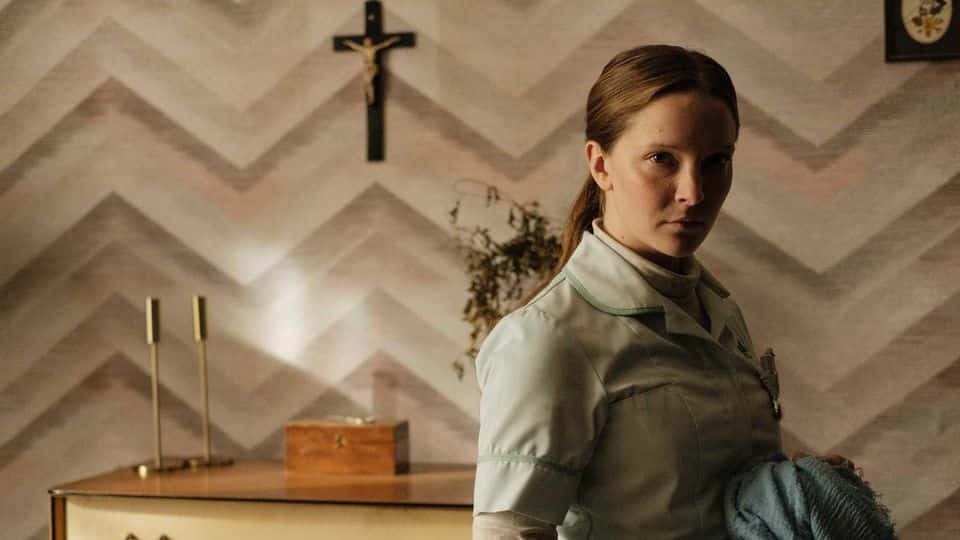Movie Review: Saint Maud
21st February 2021
Copyright: A24
Affliction and religion are deeply connected, but not through causation or correlation. When grief or troubled times are ahead, how many of those stalwart deity doubters turn to the almighty? Saint Maud uses this thought as the core of its narrative, a self-indulgent dancer hit with a chronic illness is paired with a passionate believer, a woman whose obsession is God. Pleading, bargaining or tormented by some lingering troubles of the past, Maud (Morfydd Clark) finds herself in touch with salvation. How much of it she truly believes is unknowable in these early moments of peace and clarity, preservation from a hedonistic living an inevitable theme for director Rose Glass to present to her audience, with an unremitting tone of natural talent and moments of pique tension for the eponymous Saint.
Its tones are ominous and its horror underlying, Saint Maud grapples well with arthouse fears and jealousy. But, and this is crucial for the genre it wishes to plant itself firmly into, there is a severe lack of horror. Much of it is the horror of ideas or themes, rather than a literal, perceptible scare. Maud and company build these tensions well, but the pay-off is limited and a rather miserable experience to engage with. Glass appears to be stuck in two mindsets. A Victorian-era house with the sights, sounds and creativity of such, the achingly long time it takes to boil a kettle and cook are meshed with the modernity we as a community have come to rely on. Phones and contemporary architecture crash behind characters adorned in unfitting outfits of iconographic costumes that will reminisce of a time long before it. It is soon abandoned as the titular Maud turns to frenzied behaviour and breakdowns that do nothing for the emotional scope of the film, but work wonders for Clark.
Ruined with jealousy, the obvious lead out of line with modernity and expected standards of culture comes to a head every so often, but with minimal consequence. Maud is a character breaking down entirely, but it is never shown as something more than crushing, paralysing guilt and an inability to face up to the responsibilities of it. The ghastly and constricting pangs of possession and ghostly narratives comes out of the blue, the film works far better without its bumps in the night and floating nonsense, so it is a rather upsetting shame to see a reliance on poltergeists, possessions and apparitions. All the conventional camera shots of the modern horror are presented with abject responsibility. Twisted camera angles that show claustrophobic tunnels, extreme close-ups to grip the fear found on the face of the character. A fine idea when executed with inspired and tactful brilliance, but Saint Maud doesn’t go the extra mile desired and needed by the genre.
Seaside resorts are horrible places, packed to the gills with the dreck and drudge of humanity. Saint Maud shows that and the spiral into religious seclusion and isolation with exceptional, unwavering quality. A strong start, ready to be taken away on a wave of passionate horrors and the oddities that jealousy can bring out in someone. It is only natural, and inevitable, to feel gripped by our upbringings sometimes, but that extreme is fumbled here. Saint Maud presents its tones to the extreme, and this lack of limit and blue-sky thinking is the unfortunate downfall that was bound to come from a film more focused on haunted violins and artistic camerawork than it was on true horror. Poor choices from these characters make it difficult to adapt any form of emotion or conscious love for them, and as they suffer through idiocy, so too do the audience.
![]()


